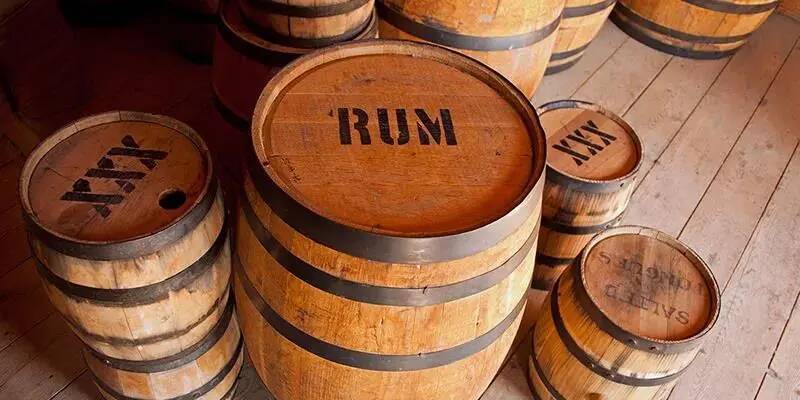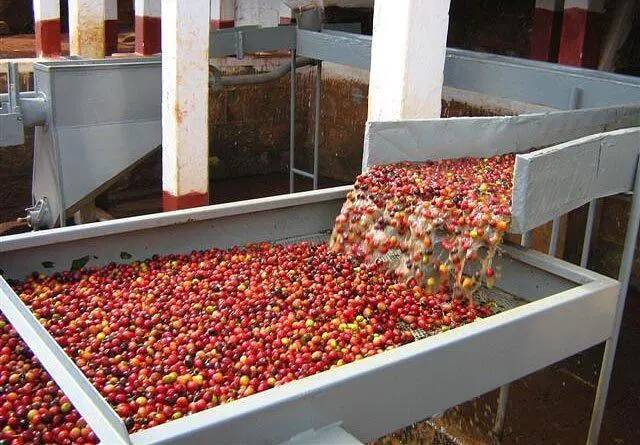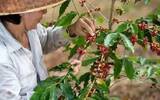The origin of barrel fermentation, the way of barrel treatment, the introduction of Honduran Shirley and Litchi Orchid Coffee.
Coffee beans are actually seeds inside coffee fruits, and the treatment method is to remove coffee beans. Traditional treatments include sun, water and honey, but as the coffee industry continues to grow, more and more treatments have emerged. Now there are many coffee processing methods on the market, which are collectively referred to as special processing methods. This is a special processing method that can make the flavor of coffee beans ever-changing, more special, rich in taste, and loved by many people. At present, relatively new treatment methods include anaerobic washing/solarization, enzyme washing, barrel treatment, etc. So do you know how the barrel treatment came about?

When it comes to barrel fermentation, everyone may think of Shirley in Honduras, but in fact, the earliest use of barrel fermentation to process coffee was San Jose Estate in Colombia. In addition to owning coffee estates, the owners of San Jose Manor also engaged in the production of rum oak barrels and brewing rum. Therefore, once his wife Monsalve Botero helped to pour distilled wine into wine barrels for fermentation, she was inspired to think about whether coffee beans could also be fermented in oak barrels that had been brewed to produce wine-like flavor.
So in 2013, she began experimenting with low-temperature fermentation of coffee in Colombia oak barrels of different ages until 2017, when she succeeded in producing the ideal combination she wanted. Later, coffee beans fermented in fine washed rum barrels and fine sun rum barrels were also introduced.

Fine washing rum barrel fermentation will first hand-selected ripe coffee fruit washing process, remove coffee peel and pulp, and then put into water fermentation for 20 hours to remove pectin. After that, they are put into rum oak barrels that are more than 8 years old. The beans are allowed to stand in the wine barrels for three months, and they are tumbled once a day so that the coffee beans can absorb the aroma evenly. During this period, coffee beans in barrels are sampled every 30 days to ensure the degree of fermentation and whether the aroma is fully absorbed. After the fermentation is completed, it will be taken to the greenhouse for drying. The refined sunning is to use African high bed type for sunning treatment, fermentation in wine barrels, and the subsequent steps are basically the same. Rum is distilled from sugar cane and poured into American oak barrels for aging, so oak barrels with a certain age will also absorb the aroma of wine, and coffee beans will also absorb the aroma of barrels using these aging barrels.
Later, the Moca Estate in Honduras also used barrel fermentation to process coffee beans, but chose whiskey sherry barrels and brandy barrels for fermentation. But the difference is that Mocha Estate ferments cold in barrels for 30-40 days (temperatures around 15-20 ° C).
At present, the beans processed in the barrels from Front Street are two coffee beans from Moka Manor. One of them is called Litchi Orchid, which is fermented in a fine washed brandy barrel. The bean seeds are Kadura and Kaduai. It is brewed with V60, 1:15 ratio. The taste will have lychee, brandy, cream and chocolate flavor. It tastes thick and sweet like honey.
Important Notice :
前街咖啡 FrontStreet Coffee has moved to new addredd:
FrontStreet Coffee Address: 315,Donghua East Road,GuangZhou
Tel:020 38364473
- Prev

What kind of water is better to make coffee?
More than 98% of a cup of drip coffee is water. What kind of water is used to brew the coffee directly affects the final flavor performance. Therefore, water is a basic and important constituent element of a cup of hand-brewed coffee, and its ranking status can only be said to be in the coffee bean itself. In daily life, there are a variety of choices of water, what kind of water is suitable for flushing
- Next

The price of coffee continues to rise, and Nestl é has invested US $100 million in a coffee factory in Vietnam to meet market demand.
Recently, according to the Vietnam Coffee and Cocoa Association (Vicofa), the estimated price of Central Highland raw coffee is 6.85-6.95 million dong / ton, which is slightly lower than the previous price of 70 million dong / ton, but remains high. In 2023, Vietnam exported more than 16% coffee.
Related
- Being chased out of the rain in front of Starbucks?! Store: Sheltering from rain under umbrellas poses a safety hazard
- The white moonlight has changed?! Lucky launches "Big Winter Pear American"
- Hand-brewed coffee three-stage method, high-sweet and universal brewing method to share! What does the high sweet water level of hand-brewed coffee mean?
- What is the difference between raw, refined and full espresso coffee? How to extract espresso and taste good?
- A complete list of coffee bean names and their meanings! What is Yejia Shefi coffee? Where is Mantelin coffee?
- What grade does Arida Manor Kaduai coffee beans belong to? What treatment is Arida ASD slow anaerobic sun exposure?
- The milk tea cup becomes smaller?! Overlord Tea Girl launches a new "Return to Yunnan" series
- Accused of selling counterfeit and high-priced coffee beans! Well-known boutique coffee brand "Oukelao" bowed and apologized!
- How to make espresso dumplings? Can I eat coffee and glutinous rice balls together?
- Save the unformed and stagnant powder cakes in one second! What is the problem with stagnant water in the powder bowl of the espresso machine?

